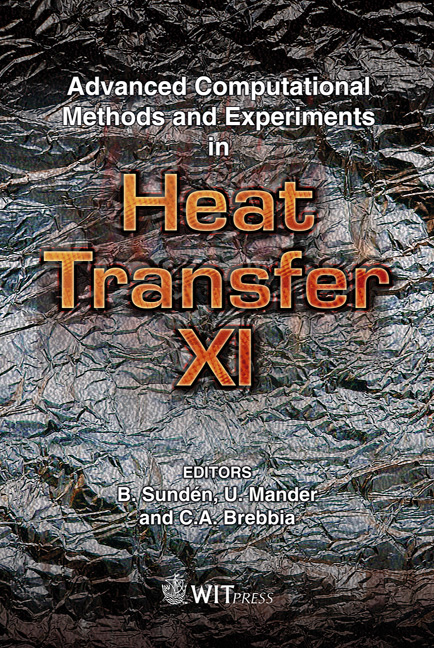Three-dimensional Simulation Of Slip-flow And Heat Transfer In A Microchannel Using The Lattice Boltzmann Method
Price
Free (open access)
Transaction
Volume
68
Pages
11
Page Range
75 - 85
Published
2010
Size
3,128 kb
Paper DOI
10.2495/HT100071
Copyright
WIT Press
Author(s)
A. C. M. Sousa, M. Hadavand & A. Nabovati
Abstract
In micro- and nano-flows, since the molecular mean free path is comparable to the system’s characteristic length, the effect of rarefaction should be considered. In this category of flows, the continuum assumption is no longer valid; therefore, heat transfer, velocity profile and pressure drop markedly and depart from those which are common to macro-flows. Rarefaction may occur in various applications, such as in zero gravity flights and vacuum devices. This phenomenon can occur at the wall surfaces when the Mach number is sufficiently small, which is the case of interest in this study. In these conditions, at the solid-fluid interfaces, the fluid has a slip velocity and a temperature jump is also present. Three-dimensional, thermally developing incompressible laminar flows in a square microchannel with constant temperature walls are studied numerically using the lattice Boltzmann method. The effect of rarefaction on the velocity and temperature distributions and on the Nusselt number is analysed. The LBM predictions are compared with those obtained using the Navier-Stokes equations with the slip condition for the same configuration. The results indicate that an increase of the slip velocity yields an increasing Nusselt number, whereas an increase of the temperature jump has the opposite effect on the Nusselt number values; therefore, the combined result of these two competing effects may yield an increase or decrease on the Nusselt number. Keywords: slip-flow, rarefaction, heat transfer, Knudsen number, lattice Boltzmann method, microchannel.
Keywords
slip-flow, rarefaction, heat transfer, Knudsen number, lattice Boltzmann method, microchannel





